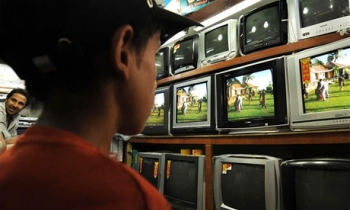Internet users in the United States (US) are spending nearly half their online time visiting content, a 37 per cent increase in share of time from four years ago.

According to OPA's Internet Activity Index (IAI), conducted by Nielsen/NetRatings, communications accounted for 46 per cent of consumers' time online in 2003. A dramatic shift has taken place since then, with consumers now spending 47 per cent of their time with content, compared to 34 per cent four years ago. The 37 per cent gain in share for content is followed closely by a 35 per cent gain in share for search. However, the total time being spent with search remains relatively low, accounting for just 5 per cent of Internet users online time in 2007.
OPA announced Monday a four-year analysis of its Internet Activity Index (IAI), a monthly gauge of the time being spent with e-commerce, communications, content and search. IAI is derived from a categorisation of Web properties accounting for more than 90 per cent , on average, of active Web users and approximately 55 per cent of total usage time (excludes .gov and .edu Web sites, as well as pornographic domains).
"When OPA created IAI, our goal was to provide a reliable, ongoing measure of the time being spent with key online activities," said OPA president Pam Horan. "For the last four years, the IAI has identified important trends in Web use and added to our understanding of consumer engagement online. As seen by Nielsen/NetRatings' recent introduction of the 'Total Minutes' metric, time spent helps to define engagement and serves as a valuable supplement to other key measures."
" IAI has identified a very significant and sustained trend in where consumers are spending their online time," Horan said. "The index indicates that, over the last four years, the primary role of the Internet has shifted from communications to content."
The increase in content's share of time has been fairly steady in the last several years, growing 10 per cent from 2003 to 2004, remaining even between 2004 and 2005, growing 13 per cent from 2005 to 2006, and growing 13 per cent from 2006 to 2007.

Horan continued, "The dominant role of content is driven by several important factors. The first is the online transition of traditionally offline activities, such as getting news, finding entertainment information or checking the weather. Quality content sites see a consistent pattern -- major news drives traffic spikes, but traffic remains consistently higher even after the event. Major news events such as Hurricane Katrina and high profile seasonal events such as the NCAA Final Four Basketball tournament are clearly driving consumers to engage more deeply with online content."
"New online features and communities are also leading consumers to spend a larger share of their online time with content. Consumers spend considerable time with social networking sites, which serve not only as places of content but are also increasingly important communications vehicles," he said.
OPA found a number of other important factors behind the changes, including:
- A more accessible, and much faster, Internet is driving increased overall time spent online.
- The increased popularity of video is leading to more time being spent with online content.
- The improvement in search allows consumers to more easily and quickly find the exact content they are looking for, increasing the likelihood they will engage more deeply with that content.
- The Web simply offers far more content than it did even four years ago, increasing content's share of time.
- The rise of instant messaging (IM) as a key communications tool has been a factor in communication's reduction in share of time. IM is a more efficient communications vehicle than email.
Founded in June 2001, the Online Publishers Association (OPA) is an industry trade organisation whose mission is to advance the interests of high-quality online publishers before the advertising community, the press, the government and the public. Members of OPA represent the standards in Internet publishing with respect to editorial quality and integrity, credibility and accountability. OPA member sites have a combined, unduplicated reach of 128.2 million visitors, or 74 per cent percent of the total US Internet audience.









